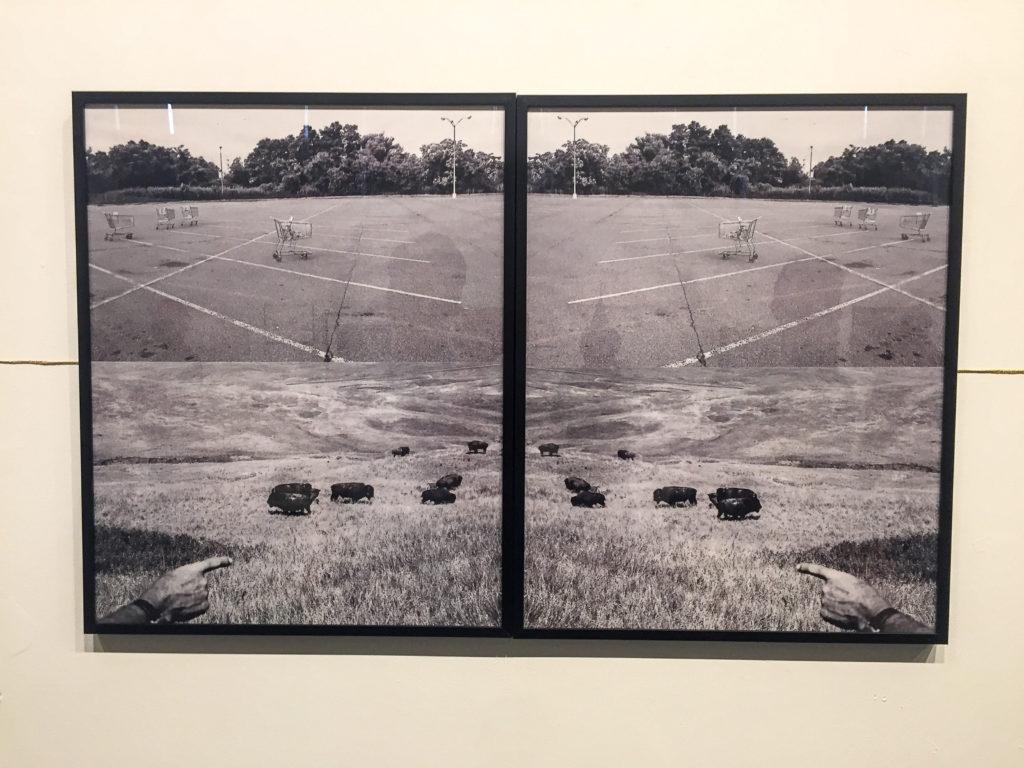By Andrew Zdechlik
zdechlik17@grinnell.edu
On Saturday Aug. 26, members from the Grinnell community gathered at the Stewart Gallery to celebrate the opening of the new exhibit “Horizon.” Although all pieces in the show follow the theme of horizons, each artist explored the theme using different mediums and styles. Therefore, this exhibit is particularly interesting because the pieces range from paper making and screen printing to photography and cartoon art.
While some pieces take on a political message, depicting the horizon of global warming at the hands of big oil companies, others take a more subtle approach simply adding a dotted line to the piece in order to draw viewers’ attention to a particular focal point. As one of the artist commented, “The theme was extremely open, so you could include any of your pieces [in the exhibit] that used lines, which meant that I could really include any of my pieces.” With such a broad theme, artists were truly at liberty to explore their imaginations and share their creativity.
“Home on the Range” by John Engelbrecht is a digital media piece that uses black and white photography to create a horizon between an urban and western nature scene. Placing mirrored copies of the photos next to each other, the artist angles the horizon between the two scenes to draw the focal point toward the center, almost creating the illusion of them being one large scene.
The piece cleverly uses shopping carts in a parking lot in the urban scene to mimic the scene of bison grazing in a field of grass. In the adjacent nature scene with the bison, a hand comes into the lower plane, pointing at the bison like most would probably do upon seeing a wild herd.
In the upper urban scene, however, human form is completely absent, leaving the shopping carts as the only inhabitants in the parking lot. Through the use of the horizon line, the artist creates a strong juxtaposition between the urban and nature scene and the role that humans play in it. Perhaps, the artist is making a powerful statement about the destruction of nature and all of its awes resulting from human expansion and development.
Moreover, although there are the urban bison — the shopping carts — they do not instill the same fascination as the living bison. The artist may have created the contrast between these two scenes to demonstrate that humans are taking land from creatures that could be making better use of it, and as a result, we are destroying our own wonderment.
Unless we suddenly become content and enamored by gazing at abandoned shopping carts, perhaps we should take time to reflect on our expansion and consider how important shopping centers and large sporting arenas truly are to our happiness in the grand scheme of things. We should consider the impact we have on our environment and all of the other inhabitants that “co-exist” with us.
The “Horizon” exhibit is inspiring and a sight for art and nature lovers alike. Take an hour out of the day to go and enjoy the pieces that these artists have chosen to share.

Photo contributed





























































